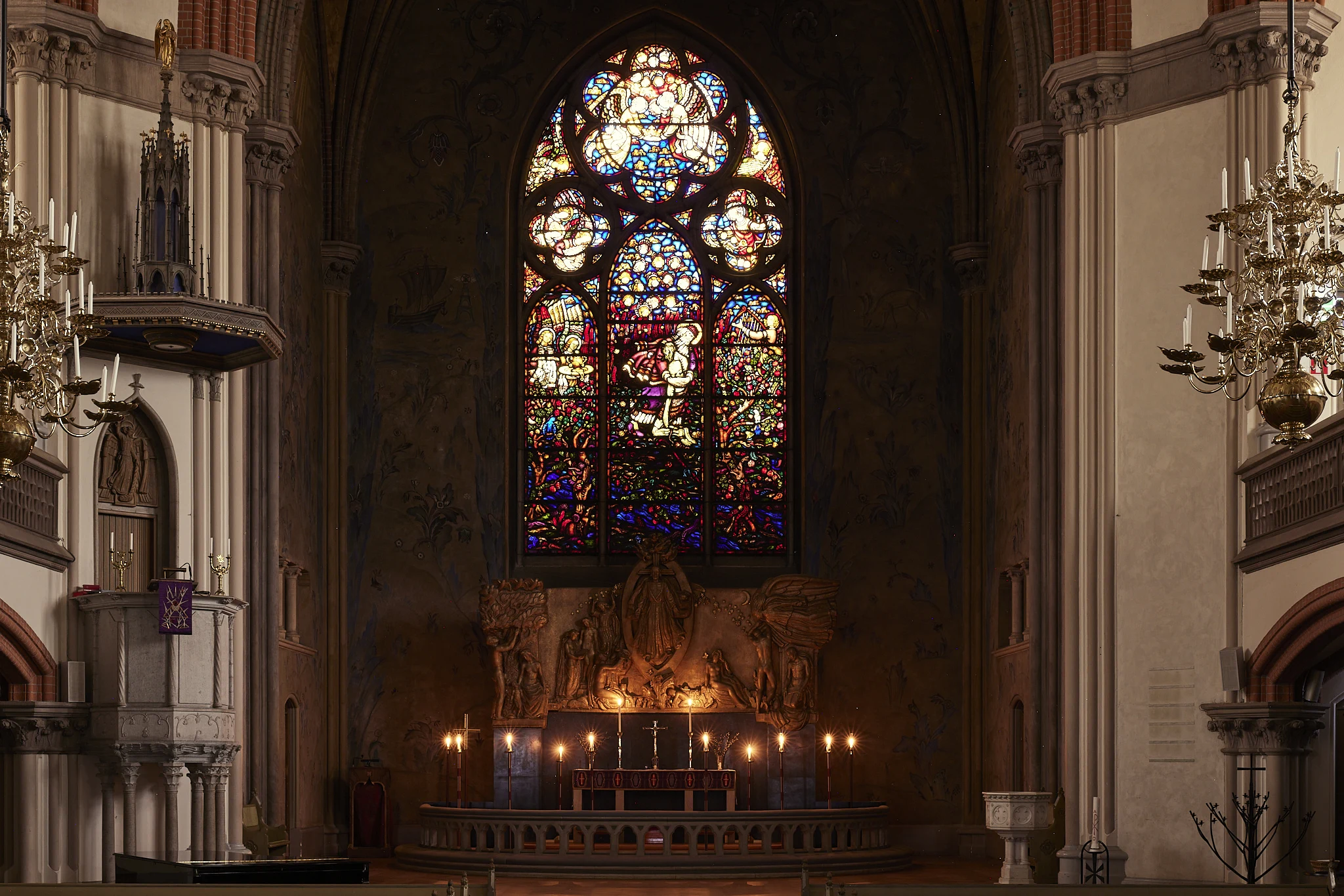
History of Oscarskyrkan


History of Oscarskyrkan
The population in Ladugårdsland parish, to which Oscarskyrkan initially belonged, increased rapidly during the last decades of the 19th century. This growth was due to the rapid development of the former Ladugårdslandet, which became the district of Östermalm in 1885. By the time the parish was divided in 1906, creating Oscars, Hedvig Eleonora, and Engelbrekt parishes, it was not only the largest parish in Stockholm by area but also the most populous in the country, with around 68,000 members.
Choosing the Site for Oscarskyrkan
After decades of discussion about various potential locations for a new church, the parish purchased the future site of Oscarskyrkan in 1895, after part of Fredrikshov Palace was demolished. That same year, an architectural competition was announced for the new church. Architect Gustaf Hermansson's design won first prize, and construction began in January 1897. It was King Oscar II himself, after whom the church is named, who laid the first cornerstone.
Challenges During Construction
The construction work was delayed due to foundation problems, missed deliveries, strikes, and other issues, so the church wasn't inaugurated until September 1903. At the parish's request, the tower was built slightly higher than in the original design. The most significant change, however, was that the original combination of brick and natural stone on the facade was replaced with a facade made entirely of natural stone. In 1903, a small chapel was also built in the southeast corner of the church grounds.
Early Criticism and the First Major Renovation
Oscarskyrkan has undergone three major renovations during the 20th century. As early as when Hermansson won the competition and at the time of the church's inauguration, the architectural style faced criticism. In 1903, Socialdemokraten remarked that the building was "devoid of any trace of originality." In 1918, just fifteen years after the inauguration, the parish decided to make some changes to the interior, and architect Lars Israel Wahlman (1870–1952) was commissioned for the task. At that time, Wahlman was considered one of the country's leading church architects, having designed Engelbrekt Church in Stockholm from 1906 to 1914.
Transformations in the Church Interior
When the renovation was completed in 1921–23, much of Hermansson's interior design had been erased. Perhaps the most impactful change to the church interior was the addition of new stained glass windows by Emanuel Vigeland (1875–1948). The next major renovation occurred in 1954–56, led by architect Otar Hökerberg (1882–1960), although this renovation was less transformative than Wahlman's. The most recent major changes to the church interior were carried out in 1997, with architect Jerk Alton (born 1937) overseeing the project.
